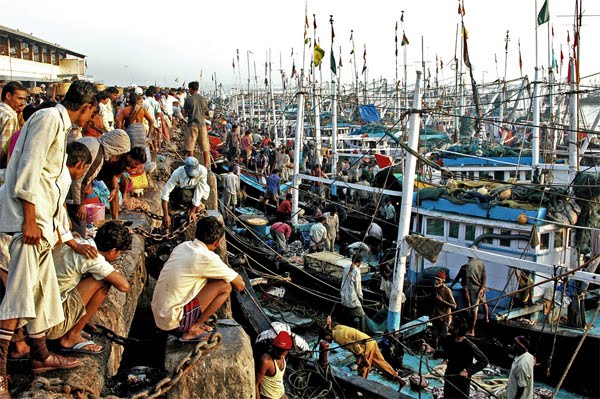Charles Kenny’s latest article, “
Bomb Scare: The World Has a Lot of Problems; an Exploding Population Isn’t One of Them” reminds me of a late-night episode of Seinfeld: a re-run played for those who missed the original broadcast. Kenny does a nice job of filling
Julian Simon’s shoes. What’s next? Will
Jeffrey Sachs do a
Paul Ehrlich impersonation? Oh, Lord, help me; I hope not.
I’ve already seen the finale. Not the one where Jerry, George, and Kramer go to jail — the denouement of the original “
Simon and Ehrlich” show. After the public figured out that each successive argument (they never met to debate) over Malthus’s worldview was simply a rehash of the first — a statement of ideology, rather than policy — they flipped the channel.
Foreign Policy could avoid recycling this weary and irrelevant 200-year-old debate by instead exploring food security from the state-centric perspective with which policymakers are accustomed. While economists might hope for a seamless global grain production and food distribution system, it exists only on their graphs.
Cropland, water, farms, and markets are still part and parcel of the political economy of the nations in which they reside. Therefore they are subject to each state’s strategic interests, political considerations, local and regional economic forces, and historical and institutional inefficiencies.
From this realistic perspective, it is much less important that world population will soon surpass 7 billion people, and more relevant that nearly two dozen countries have dropped below established benchmarks of agricultural resource scarcity (less than 0.07 hectares of cropland per person, and/or less than 1000 cubic meters of renewable fresh water per person).
Today, 21 countries—with some 600 million people—have lost, for the foreseeable future (and perhaps forever), the potential to sustainably nourish most of their citizens using their own agricultural resources and reasonably affordable technological and energy inputs. Instead, these states must rely on trade with–and food aid from–a dwindling handful of surplus grain producers.
By 2025, another 15 countries will have joined their ranks as a result of population growth alone (according to the UN medium variant projection). By then, about 1.4 billion people will live in those 36 states—with or without climate change.
For the foreseeable future, poor countries will be dependent on an international grain market that has recently experienced unprecedented swings in volume and speculation-driven price volatility; or the incentive-numbing effects of food aid. As demand rises, the poorest states spend down foreign currency reserves to import staples, instead of using it to import technology and expertise to support their own economic development.
Meanwhile, wealthier countries finding themselves short of water and land either heavily subsidize local agriculture (e.g., Japan, Israel, and much of Europe) or invest in cropland elsewhere (e.g., China, India, and Saudi Arabia). And some grain exporters—like Thailand—decided it might be safer to hold onto some of their own grain to shield themselves from a future downturn in their own harvest. All of this is quite a bit more complex than either Malthus could have imagined or Kenny cares to relate.
It hardly matters why food prices spiked and remained relatively high—whether it is failed harvests, growing demand for grain-fed meat, biofuels, profit-taking by speculators, or climate change. Like it or not, each has become an input into those wiggly lines called grain price trends, and neither individual states nor the international system appears able or willing to do much about any of them.
From the state-centric perspective, hunger is sustained by:1. The state’s inability or lack of desire to maintain a secure environment for production and commerce within its borders;
2. Its incapacity to provide an economic and trade policy environment that keeps farming profitable, food markets adequately stocked and prices reasonably affordable (whether produce comes from domestic or foreign sources); and
3. Its unwillingness or inability to supplement the diets of its poor.
In some countries, aspects of population age structure or population density could possibly affect all three. In others, population may have little effect at all.
What bugs me most about Kenny’s re-run is its disconnect with current state-centric food policy concerns, research, and debates (even as the U.S. administration and Congress are focusing on food security, with a specific emphasis on improving the lives of women.—Ed.).
Another critique of Malthus’s 200-year-old thesis hardly informs serious policy discussions. Isn’t Foreign Policy supposed to be about today’s foreign policy?
Richard Cincotta is a consultant with the Environmental Change and Security Program and the demographer-in-residence at the H.L. Stimson Center in Washington, DC.
Photo Credit “The Bombay Armada” courtesy of Flickr user lecercle.

 A Publication of the Stimson Center.
A Publication of the Stimson Center.



